PRESTO PLANS
Sent straight to your inbox
CLICK HERE TO ACCESS
Sign up to receive 10 ready-to-use ELA resources your students will love!
10 FREE ELA RESOURCES
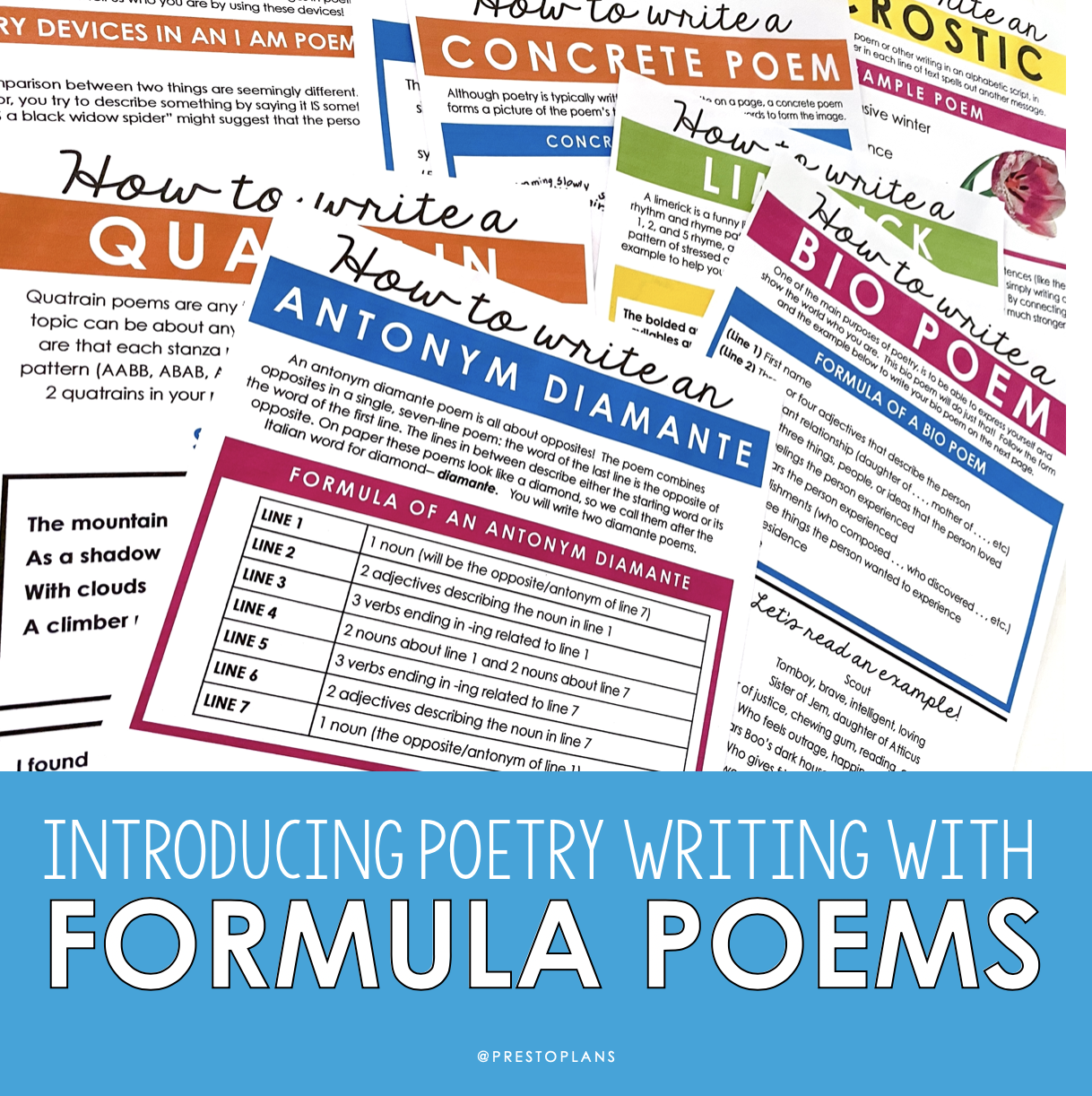
Introducing Students to Writing Poetry with Formula Poems
Formula poems (such as haikus, acrostics, limericks, antonym diamantes, etc.) adhere to a set of formal guidelines. Although these types of poems can seem restrictive to creativity, their limitations can actually tend to have the opposite effect! This is especially true for students who are just starting out with poetry and might be overwhelmed with the endless possibilities of writing a freeform poem. For many students, the idea of writing a poem is anxiety-inducing. By providing some structure at the outset, formula poems can be a great starting point to ease your ELA students into writing poetry.
I like to start each poetry unit by getting students to complete a formula poetry booklet. Here are the different types of formula poems I like to include in mine.
Bio Poem
The first type of poem you can include in your formula poetry booklet is the bio poem. The guidelines of the bio poem emphasize what is perhaps the central purpose of poetry: self-expression. Naturally, the bio poem is a good starting point as it will prompt your students to begin writing poetry that shows the world who they are!
Include the following formula of the bio poem along with an example in your formula poetry booklet. The numbers (1-10) correspond to the line numbers of the poem.
- First name
- Three or four adjectives that describe the person
- Important relationship (daughter of . . . , mother of . . . , etc)
- Two or three things, people, or ideas that the person loved
- Three feelings the person experienced
- Three fears the person experienced
- Accomplishments (who composed . . , who discovered . . , etc.)
- Two or three things the person wanted to experience
- His or her residence
- Last name
I Am Poem
The next type of formula poem you can introduce to your students is called the I Am Poem. For this one, students will write a comparison poem that includes at least 10 metaphors, similes, or hyperboles (they should use a mixture of each) that describe who they are. As a final copy, students will trace the outline of their hands and write the poem within the palm area.
This type of formula poem is an effective way to get your students used to using literary devices to strengthen their poetic images. In my formula poetry booklets, I like to give students clear and concise definitions of these three literary devices along with examples.
Haiku
As you and some of your students might already know, a Haiku is an unrhymed poem that commonly consists of three short lines. The first line has five (5) syllables, the second line has seven (7) syllables, and the third line has five (5) syllables. Haikus originate from Japanese culture, and some of the usual themes include nature, feelings, or experiences. A Haiku is supposed to “paint” a mental image in the reader’s mind.
Because they are so short, I get students to write three Haikus in their formula poetry booklets.
Acrostic
With acrostic poetry, the first letter of each line spells out its own word, usually creating a vertical message alongside the poem. Although it is more challenging to do so, encourage your students to connect the lines of poetry together to form sentences and to make the word that is spelled out by the first letters to thematically related the poem.
With the acrostic poem, and with all other poems in the formula poetry booklets, I get students to complete rough drafts first. Then, I get them to get peer feedback before editing and completing a final good copy.
Concrete
The next poem you can include in your formula poetry booklet is the concrete poem which has a kindred spirit with the acrostic poem! Although poetry is typically written from left to right on a page, a concrete poem instead forms a picture of the poem’s topic out of the letters and words. Students tend to have a lot of fun writing these! I like to show students examples of concrete poems. Then, I get them to draft the writing of the poem before deciding on its shape for the final copy.
Antonym Diamante
An antonym diamante poem is a seven-line poem that is all about opposites (hence the word antonym). The word of the last line is the opposite of the word of the first line. The lines in between describe either the starting word or its opposite. On paper these poems look like a diamond, so they are named after the Italian word for diamond—diamante. Here’s the formula for this type of poem, with each bullet point corresponding to a new line:
- 1 noun (will be the opposite/antonym of line 7)
- 2 adjectives describing the noun in line 1
- 3 verbs ending in -ing related to line 1
- 2 nouns about line 1 and 2 nouns about line 7
- 3 verbs ending in -ing related to line 7
- 2 adjectives describing the noun in line 7
- 1 noun (the opposite/antonym of line 1)
You can grab a FREE antonym diamante writing activity to try with your students by clicking here.
Limerick
The next type of poem you can use for introducing your students to writing formula poetry is the limerick. A limerick is a funny little 5-line poem that has a very distinctive rhythm and rhyme pattern. The rhyming pattern is AABBA, so the last words of lines 1, 2, and 5 rhyme, and the last words of lines 3 and 4 rhyme.
A limerick also has a pattern of stressed and unstressed syllables. Below is an example of a limerick with the stressed syllables bolded and underlined (the other syllables are unstressed). Get your students to read this poem aloud to help them grasp the difference. This will also help to better understand poetic meter down the road!
“There was an old man from Peru
Who dreamed he was eating his shoe
He awoke in the night
With a terrible fright
To discover it’s totally true.”
There are lots of other funny examples of limericks online that you can use to show your students.
Quatrain
The last type of poem that you can introduce to your students in your formula writing booklet is the quatrain. Quatrain poems are any four-line stanzas with a rhyming pattern, and a poem might consist of one or more quatrains. The topic of a quatrain poem can be about anything. The only rules are that each stanza must be four lines, and there must be a rhyming pattern (AABB, ABAB, ABBA, AAAA, ABCB, etc.).
Learning how to write a quatrain opens the door to understanding other common types of stanzas included in poetry, such as the couplets, tercets, sestets, and octaves. These will be helpful to know at the outset if you plan to talk about the different Shakespearean and Petrarchan sonnets during your poetry unit.
There you have it! I hope you find this helpful for introducing your students to formula poetry writing.
If you liked this formula poetry writing post, you might also want to check out “Analyzing Poetry with One-Pagers.”
Search the blog for what you are teaching
GIVEAWAYS
sent straight to your inbox!
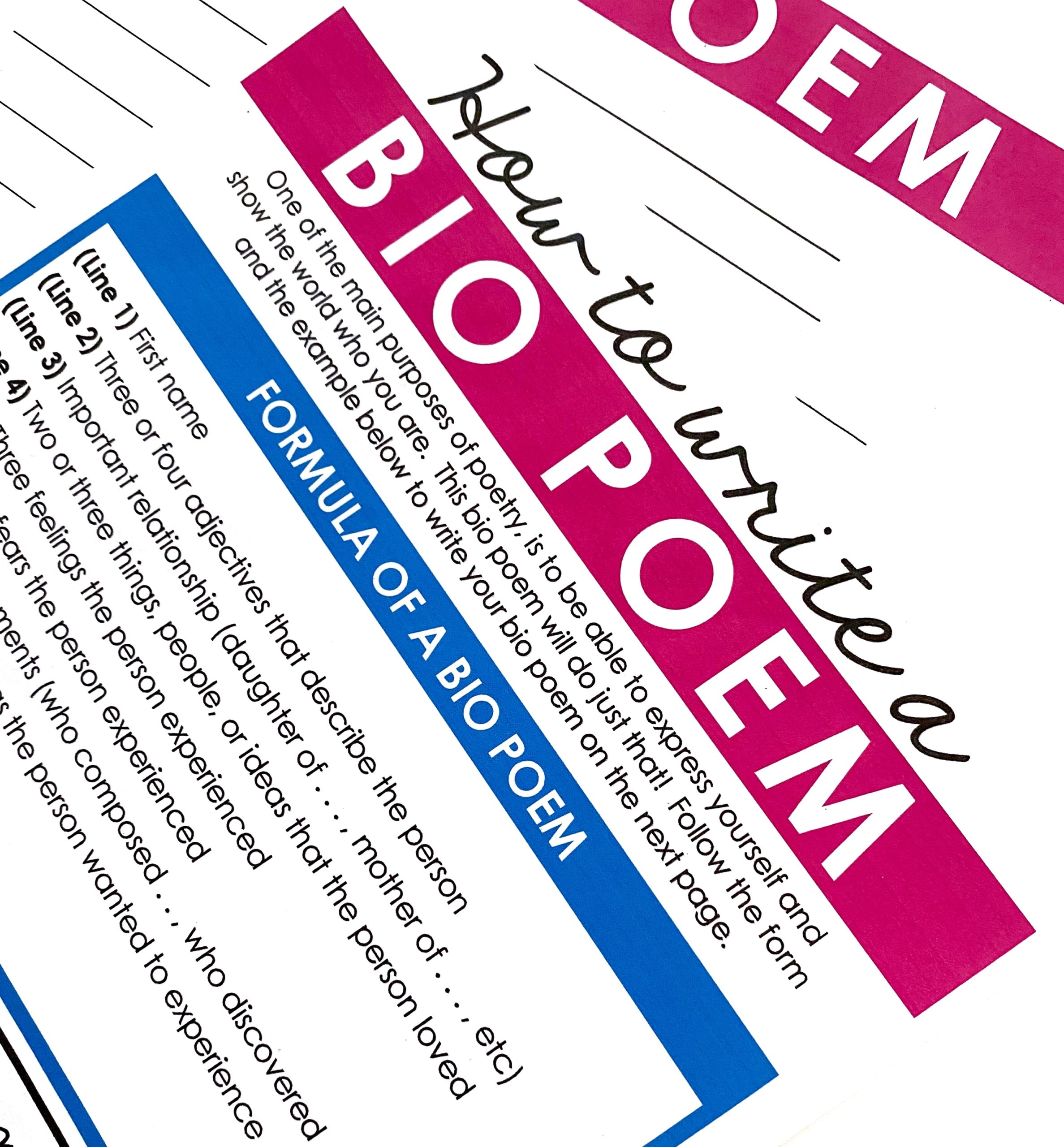
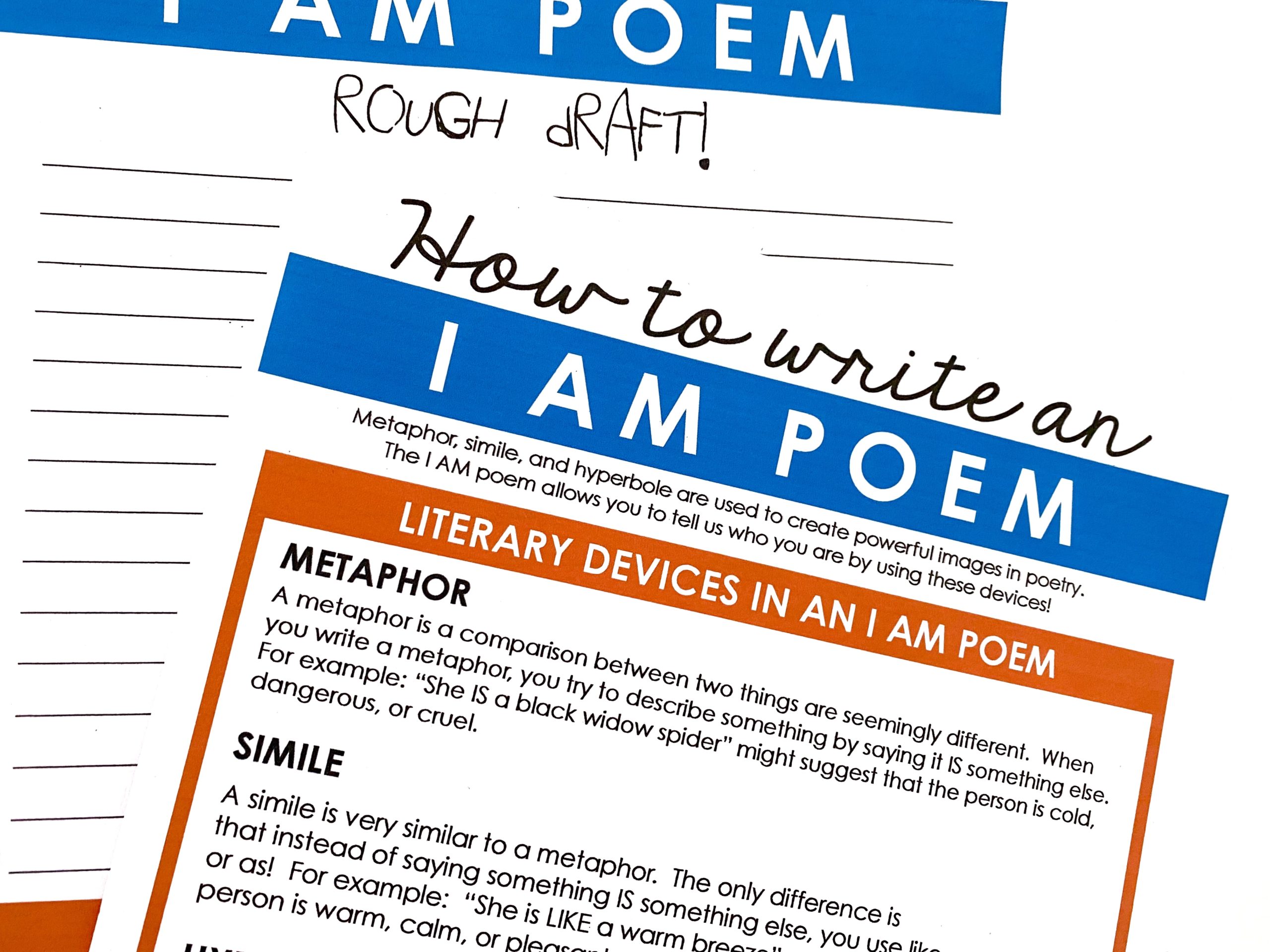
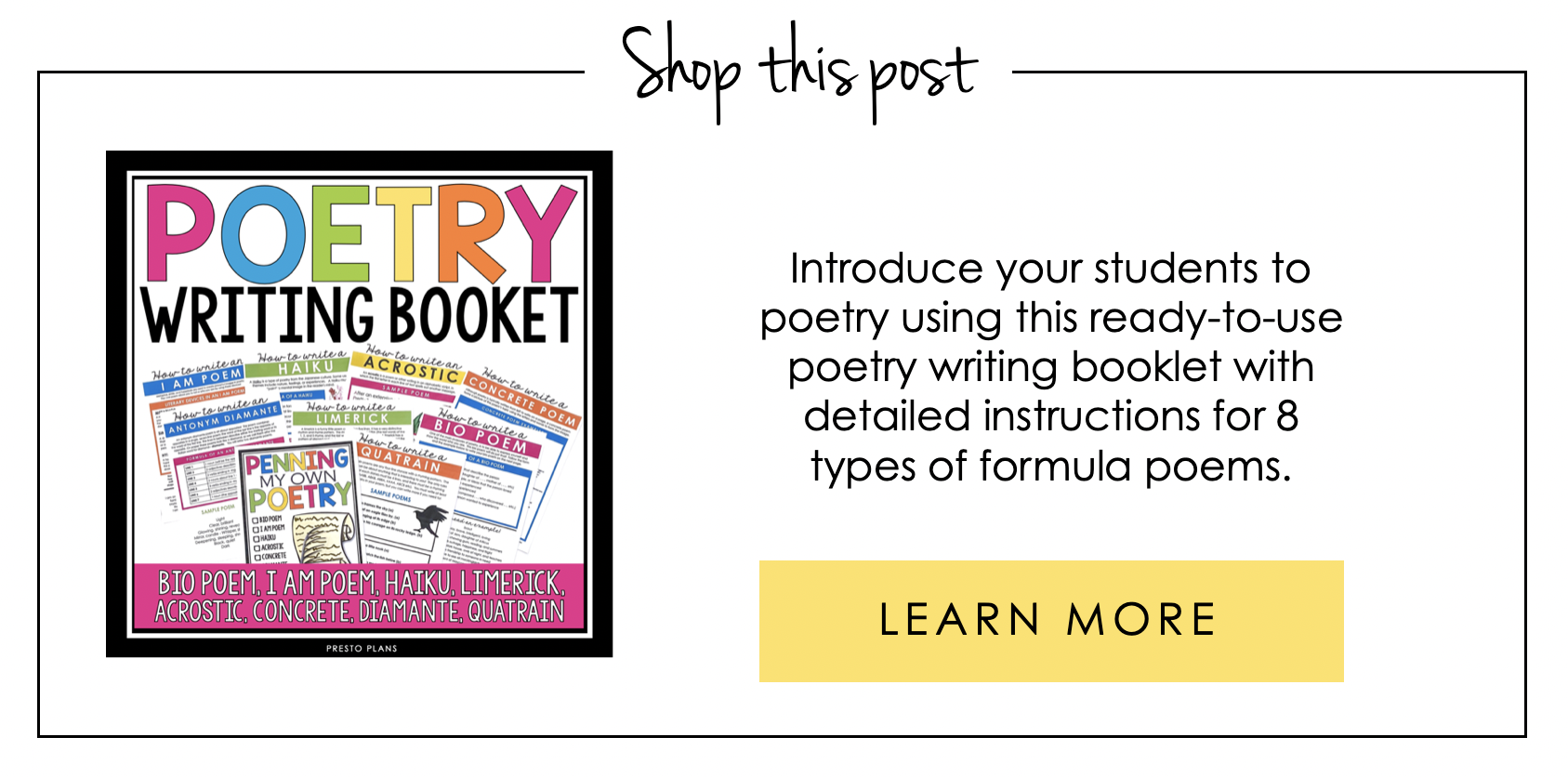
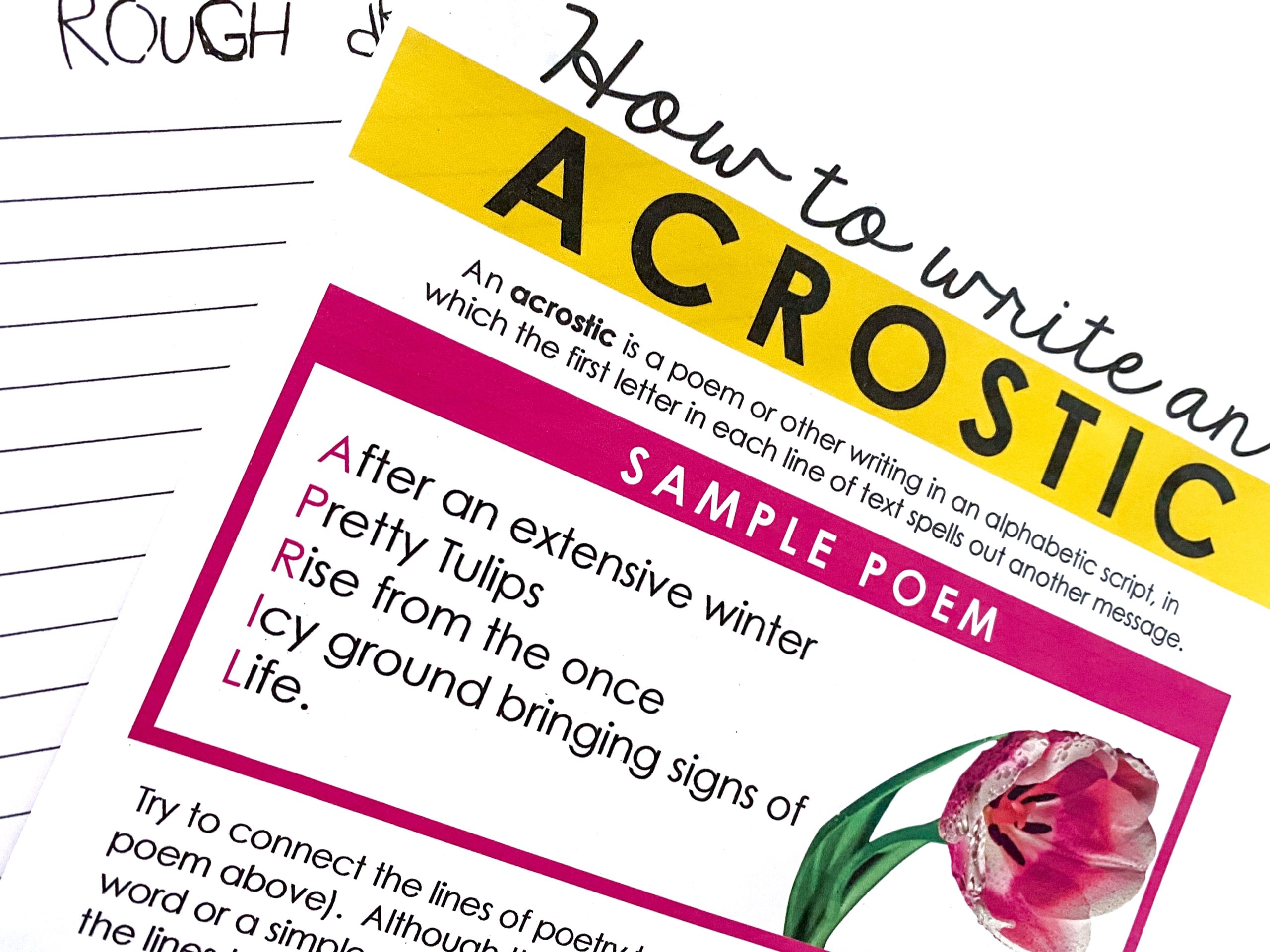
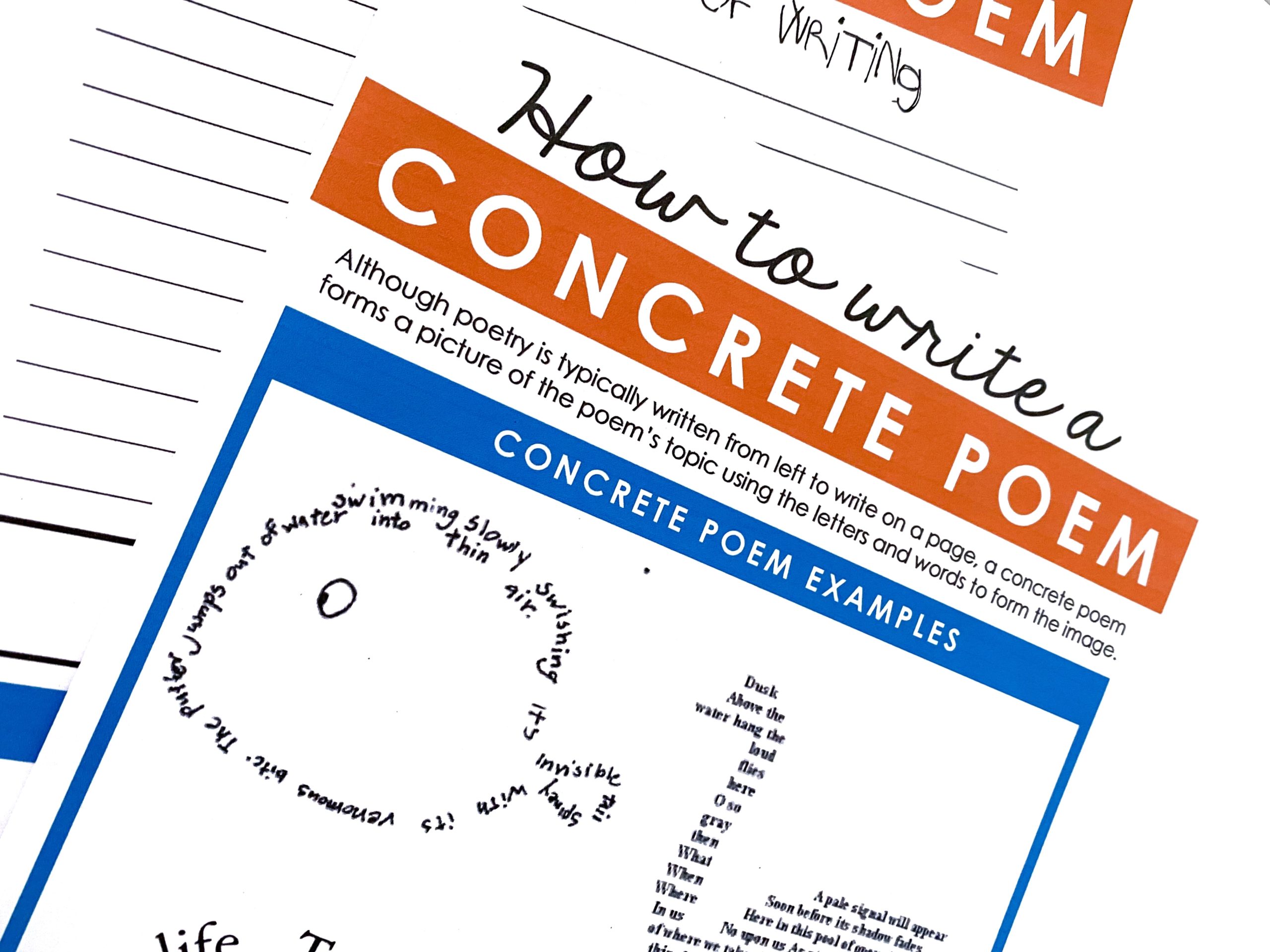
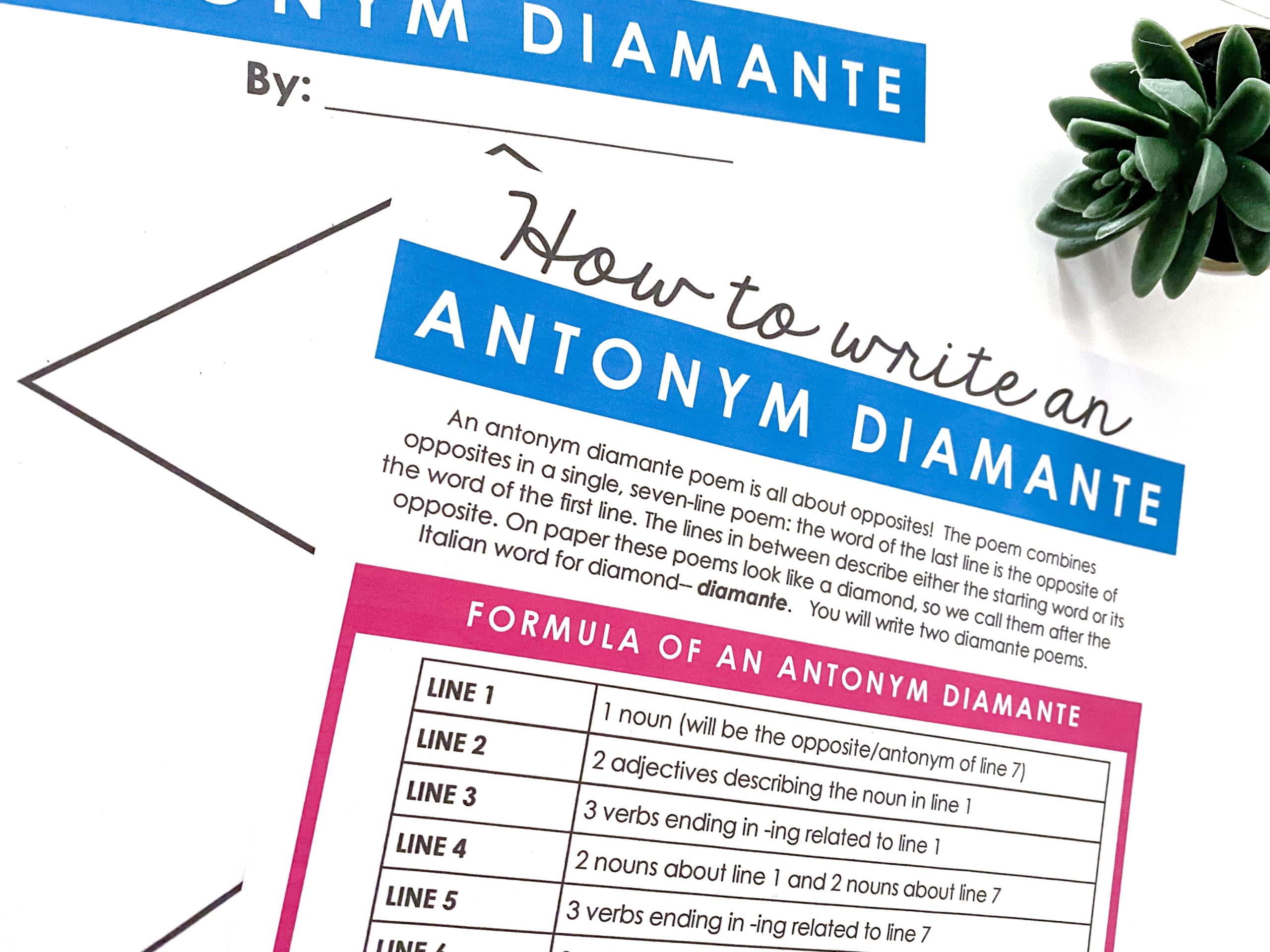
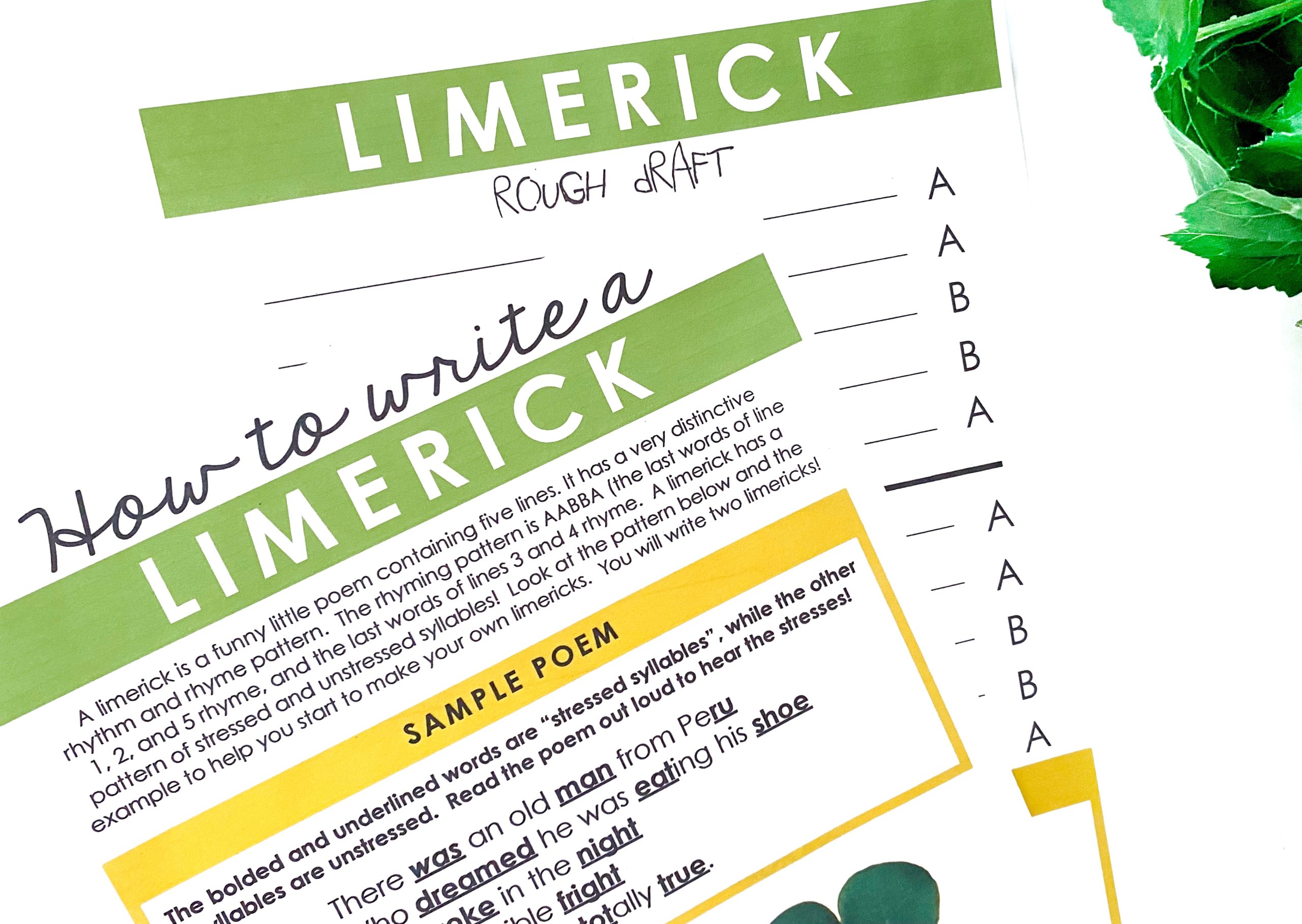
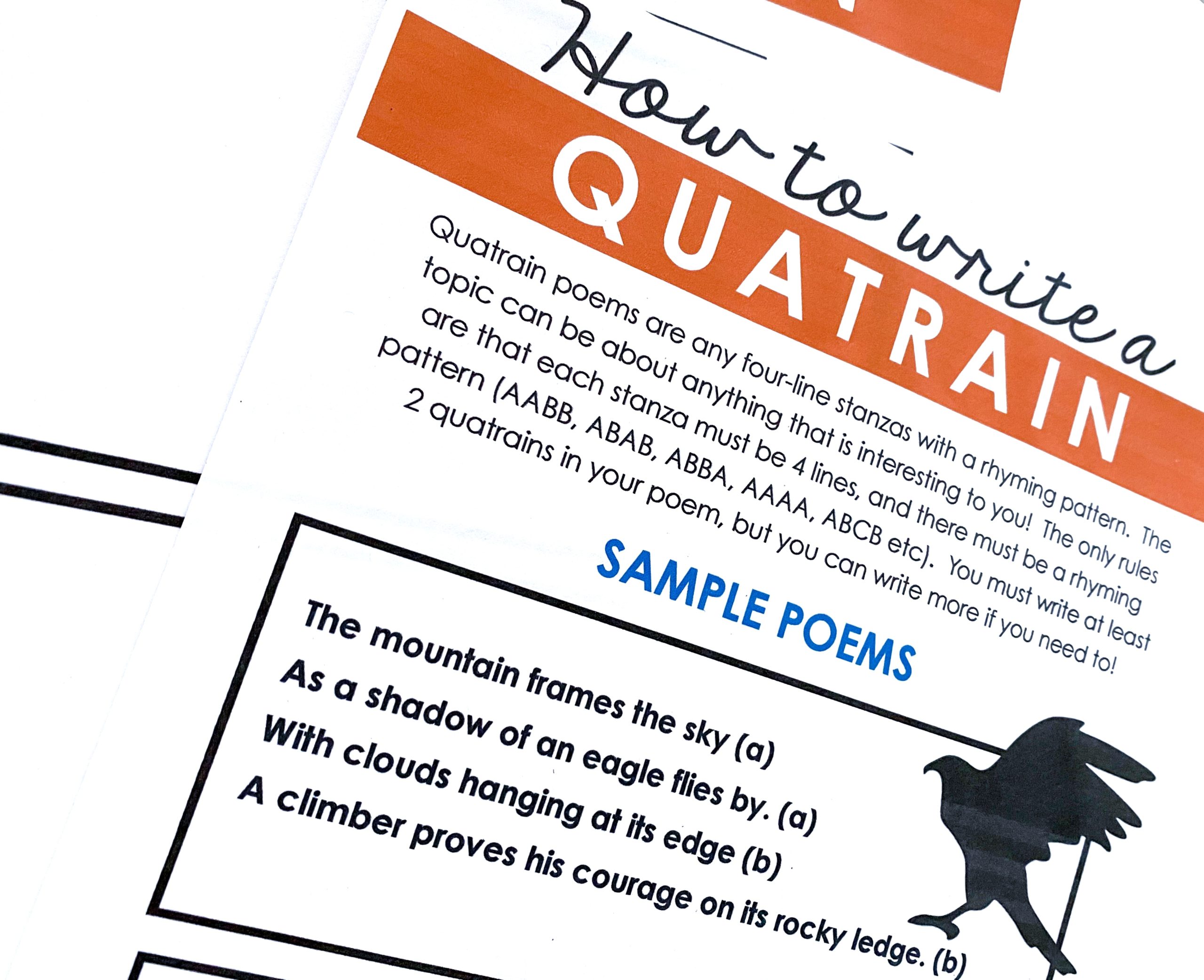
share this post